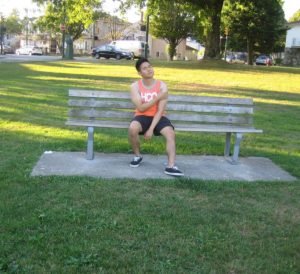Rotator cuff tendonitis involves inflammation of a muscle group in the shoulder. There is also inflammation of the bursa. It is important to note that the rotator cuff is a group of 4 tendons that covers the head of the humerus and controls arm elevation and rotation.
The condition is often due or linked with repetitive overhead movements such as raking, throwing and other forms of highly repetitive motions. It might also occur due to an injury. It is important to note that rotator cuff tendonitis is the mildest form of injury affecting the rotator cuff.
Indications
The characteristic indications of rotator cuff tendonitis include pain radiating from the exterior arm to several inches beneath the top of the shoulder. The pain might also arise in the front and upper part of the shoulder. It might disrupt with sleeping and even awaken the individual with a nagging pain in the upper arm.

The indications can be aggravated by elevating the arms overhead or engaging in activities that involve reaching behind the body. In addition, reaching behind the back to fasten underclothing or passing a belt can worsen the arm and shoulder pain.
Management of rotator cuff tendonitis
The medical history and physical exam can be used to come up with the right diagnosis. An X-ray will often reveal alterations on the arm bone where the rotator cuff muscles are linked, but an MRI can provide a conclusive diagnosis.
Medical care
The following steps must be taken as a conservative approach in managing rotator cuff tendonitis:
- Stop or limit the activity that requires the use of the shoulder at or above the shoulder level
- Provide anti-inflammatory medications to lower the arm and shoulder pain
- Apply an ice pack on the affected area
- Start an exercise regimen to maintain flexibility
- Avoid lifting heavy objects using the affected arm or using any shoulder-strap bags on the affected side.
During the early phases, over-the-counter anti-inflammatory medications can provide relief. Nevertheless, it is vital to avoid any repetitive activity and keep the elbow beneath the shoulder level when using the arm to allow the inflammation to settle.
Daily stretching while under a warm shower is also beneficial. In case the shoulder pain becomes intense, the doctor might suggest a prescription-strength drug or cortisone injection.
More Information / Disclaimer
The information posted on this page on rotator cuff tendonitis is for learning purposes only. Learn to recognize the indications of this tendon condition by taking a standard first aid course with Saskatoon First Aid.
